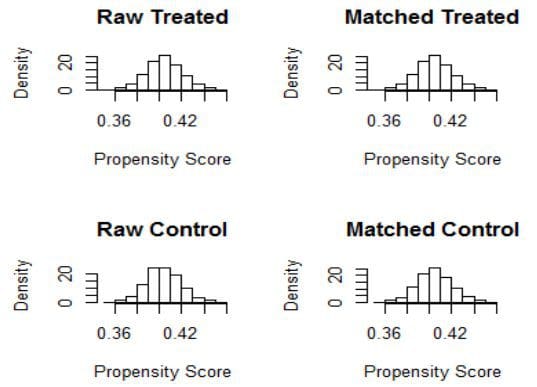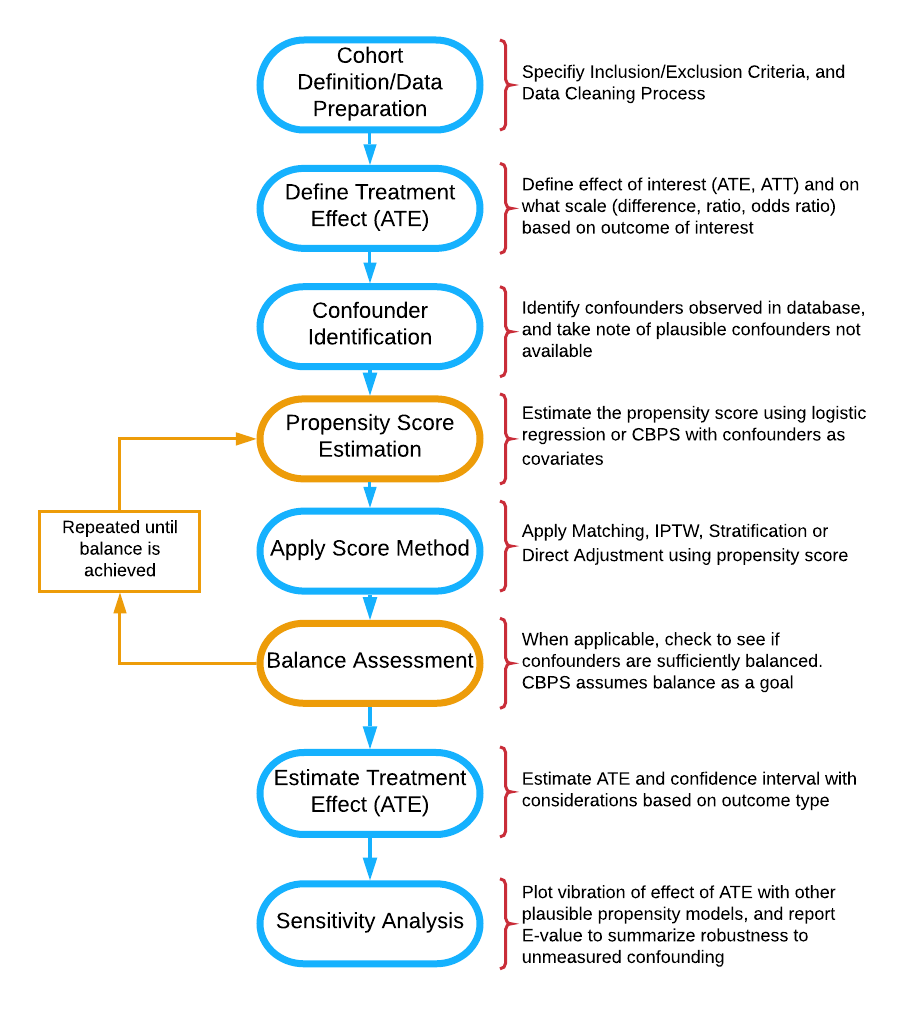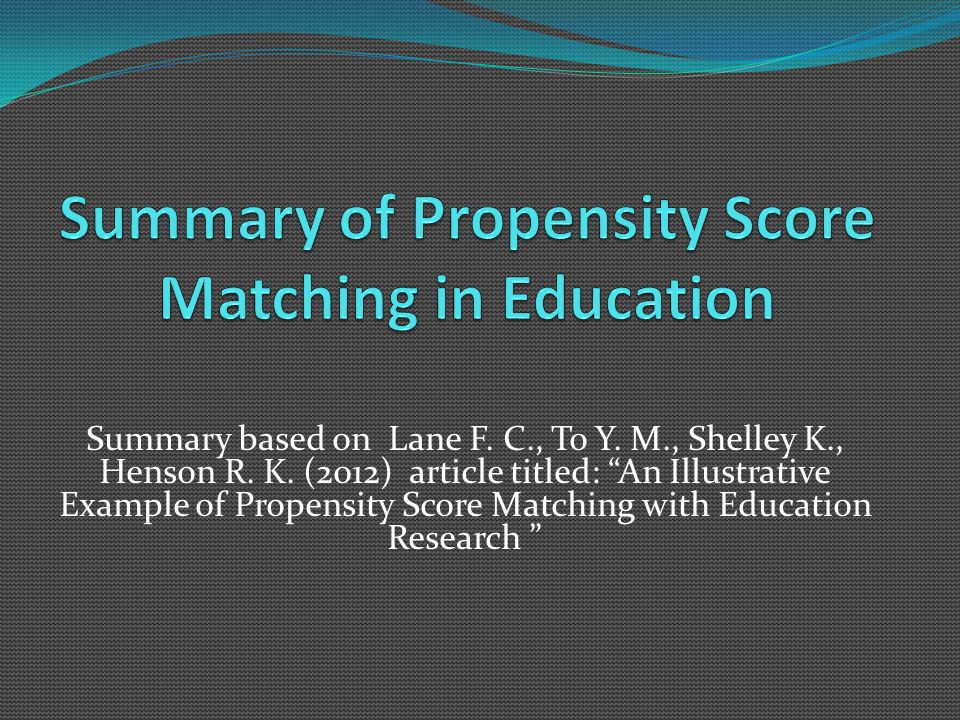The concept of propensity score matching psm was first introduced by rosenbaum and rubin 1983 in a paper entitled the central role of the propensity score in observational studies for casual effects statistically it means.
Propensity score matching in r.
Here i use a loess smoother to estimate the mean of each covariate by treatment status at each value of the propensity score.
Once we implement matching in r the output provides comparisons between the balance in covariates for the treatment and control groups before and after matching.
Rosenbaum and rubin 1983 is the most commonly used matching method possibly even the most developed and popular strat egy for causal analysis in observational studies pearl 2010.
It is used or referenced in over 127 000 scholarly articles 1.
Propensity score matching in spss provides spss custom dialog to perform propensity score matching.
This website is for the distribution of matching which is a r package for estimating causal effects by multivariate and propensity score matching.
The output below indicates that the propensity score matching creates balance among covariates controls as if we were explicitly trying to match on the controls themselves.
Psm attempts to reduce the bias due to confounding variables that could be found in an estimate of the treatment effect obtained from simply comparing outcomes among units that received the treatment versus those that did not.
Proper citations of these r packages is provided in the program.
Below is an example using the four covariates in our model.
In the statistical analysis of observational data propensity score matching is a statistical matching technique that attempts to estimate the effect of a treatment policy or other intervention by accounting for the covariates that predict receiving the treatment.
See previous post on propensity score analysis for further details.
Matching is based on propensity scores estimated with logistic regression.
If matching is done well the treatment and control groups will have near identical means of each covariate at each value of the propensity score.
Using the spss r plugin the software calls several r packages mainly matchit and optmatch.






















